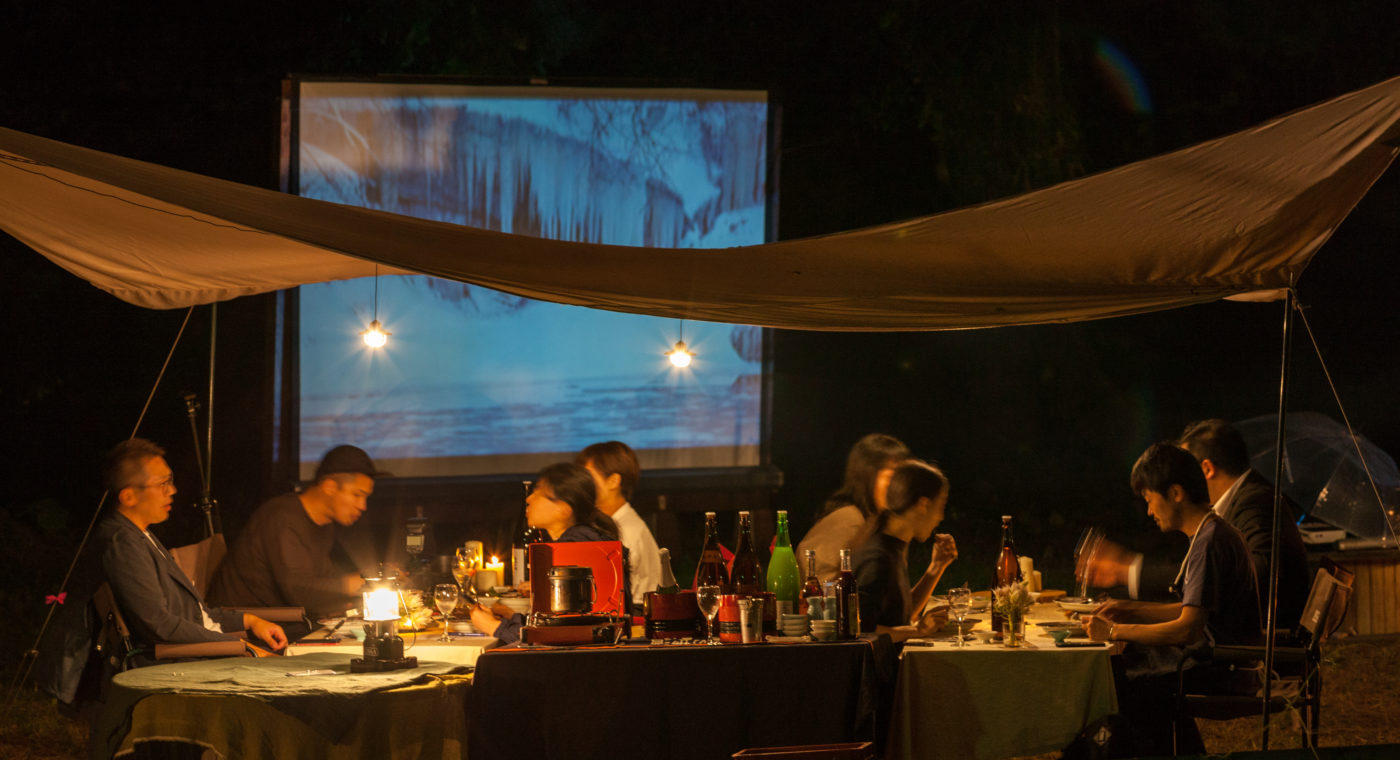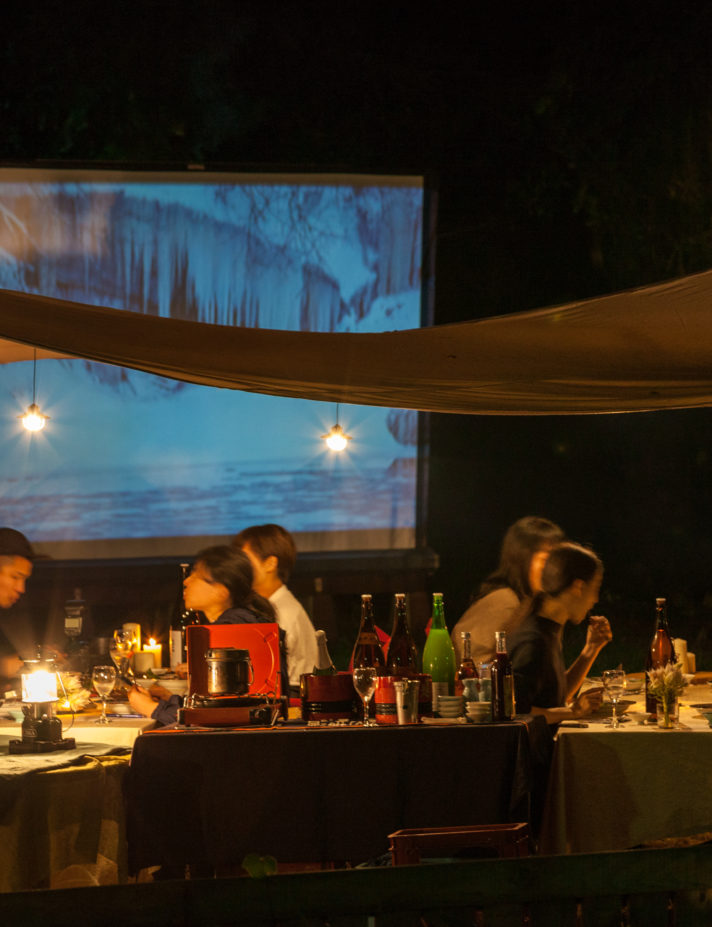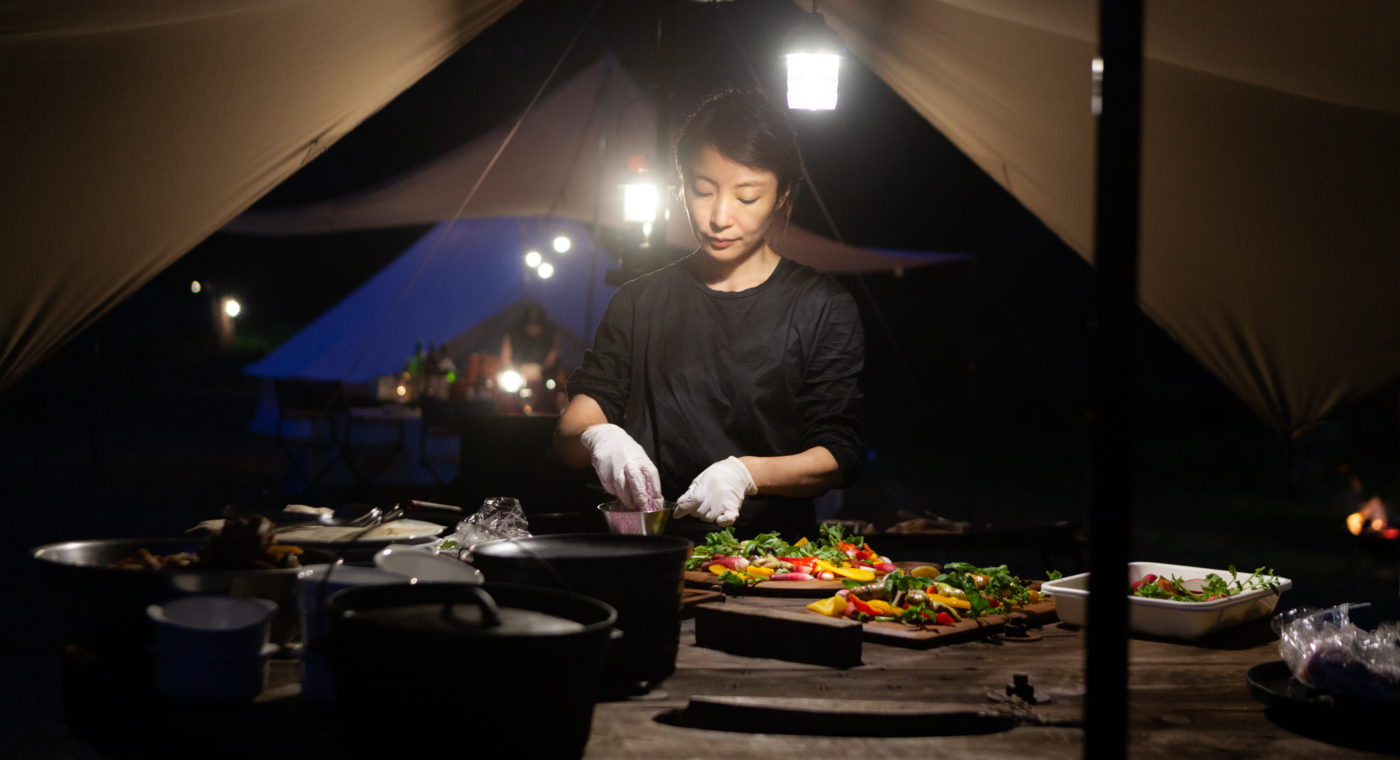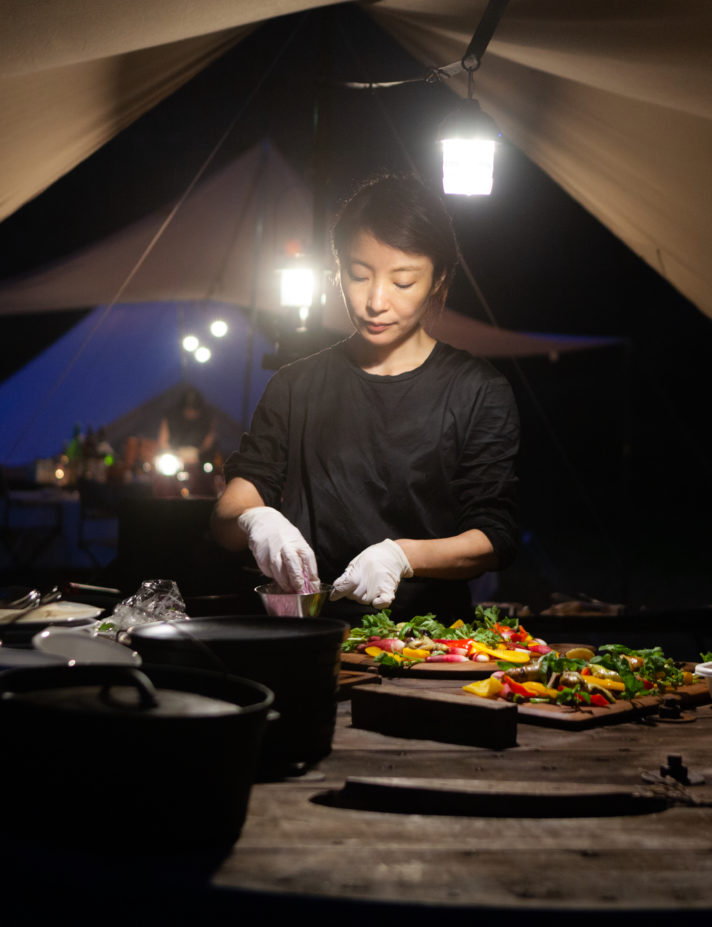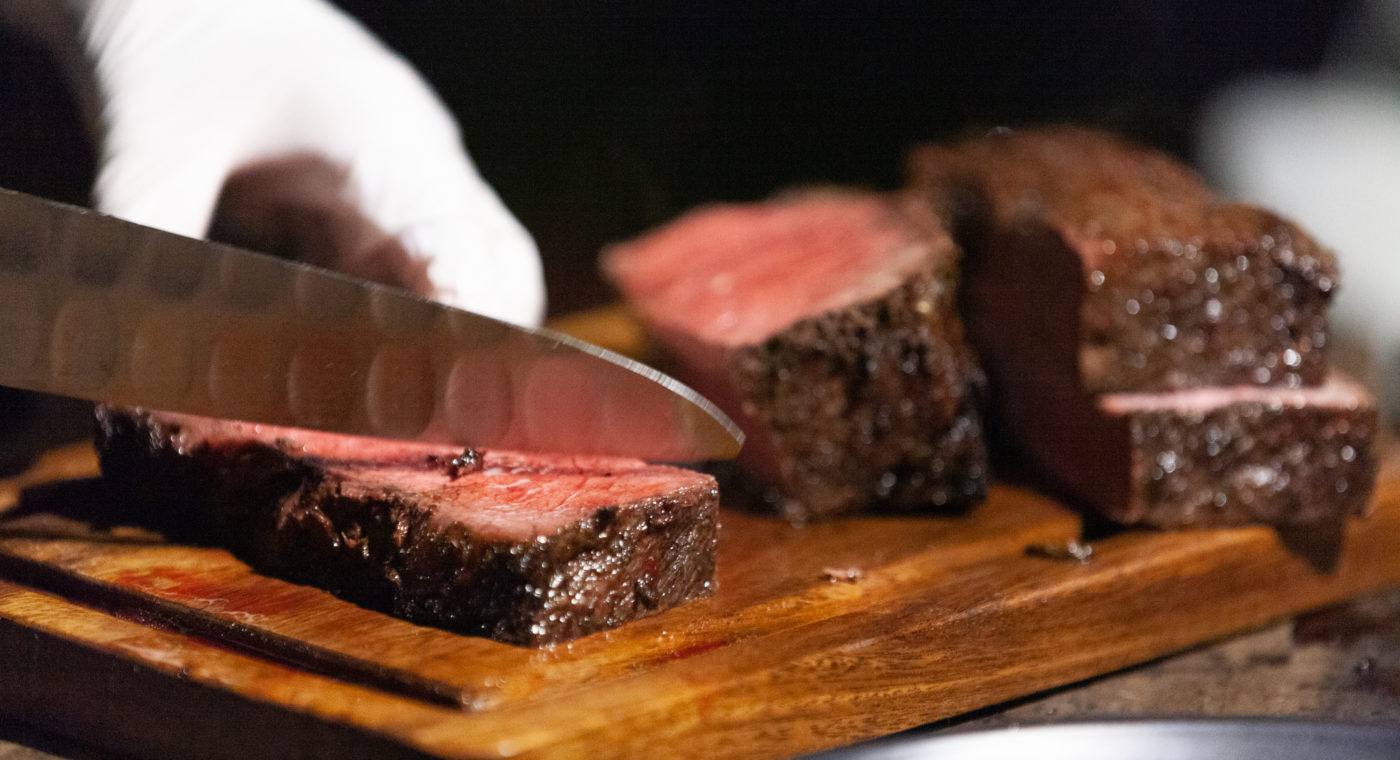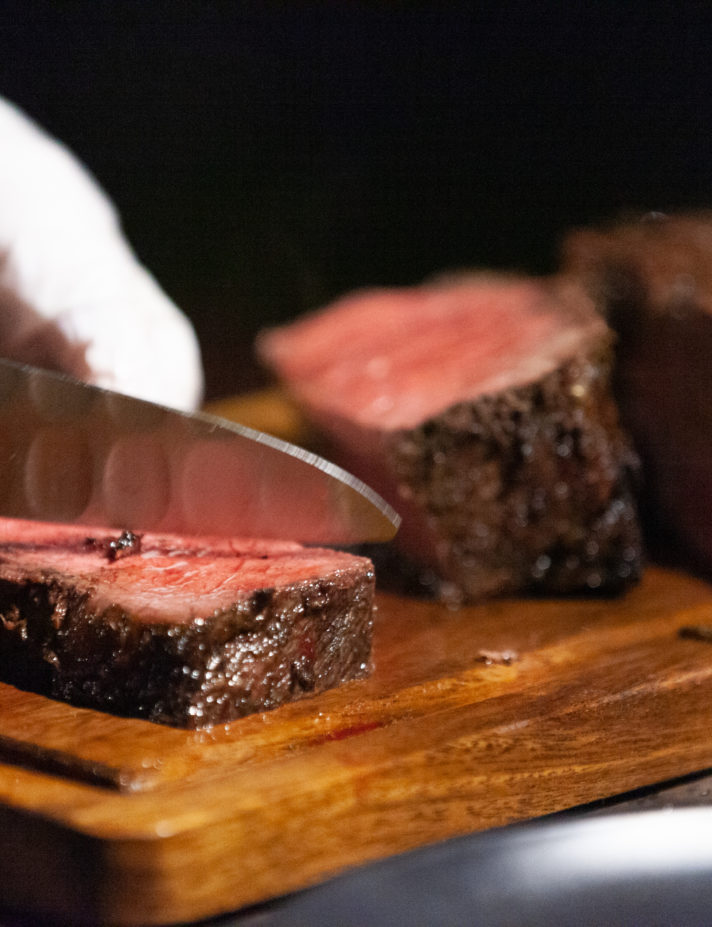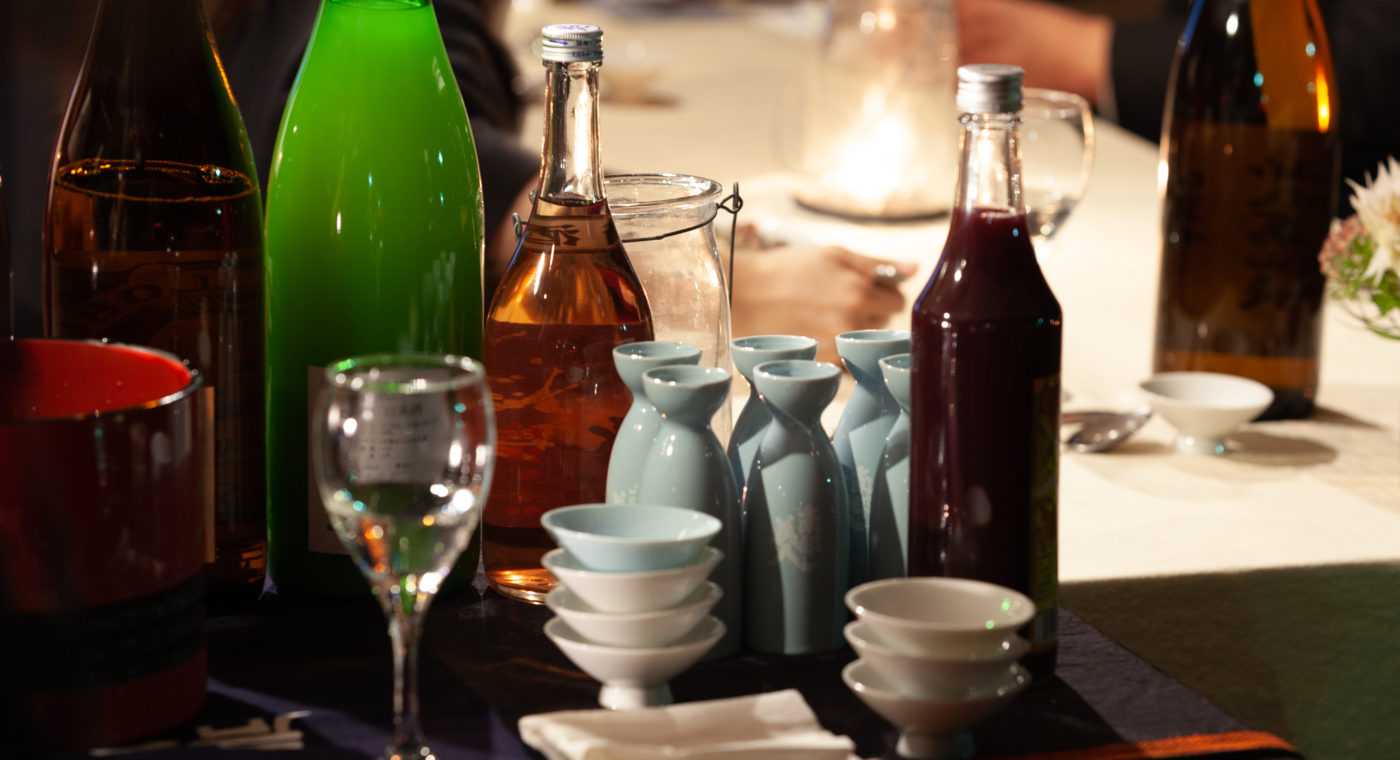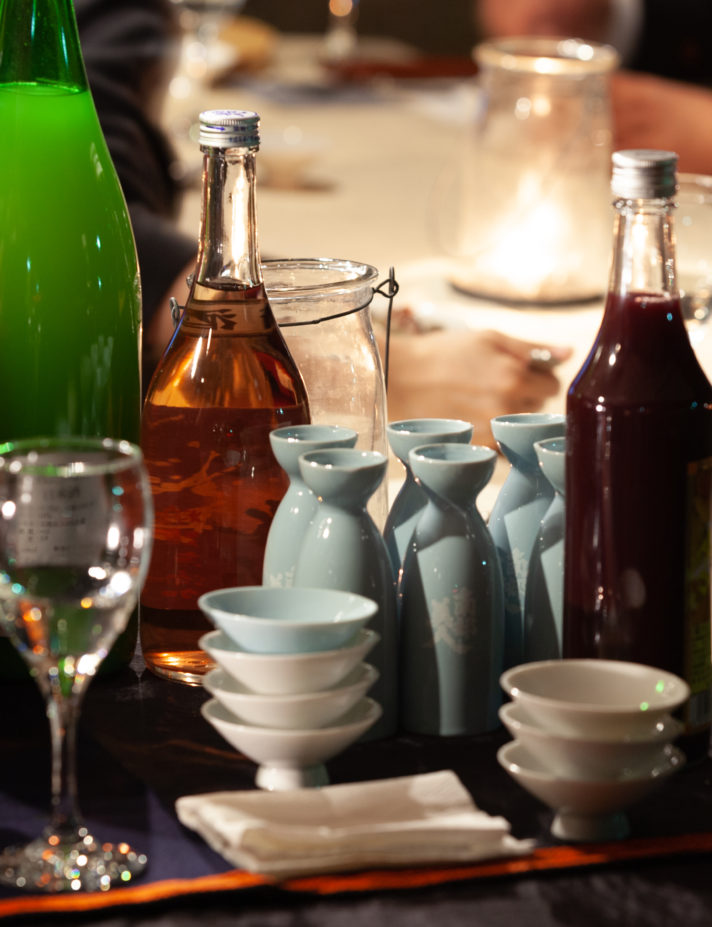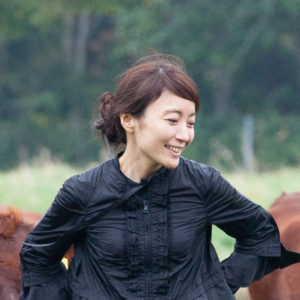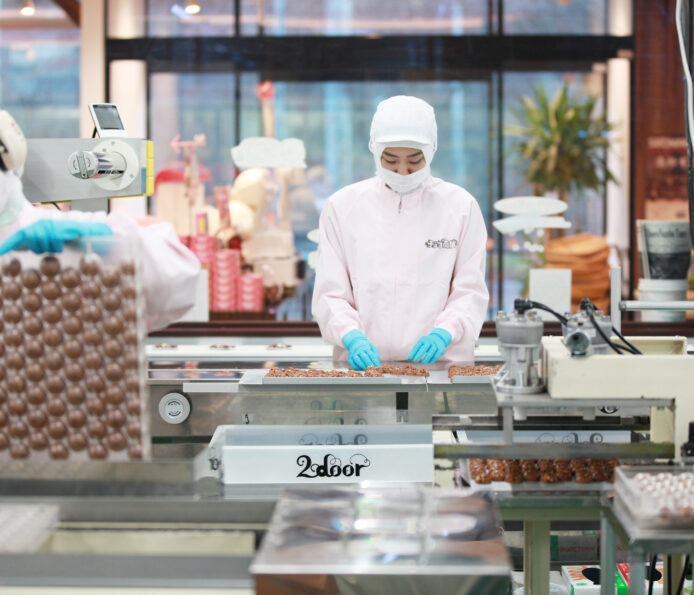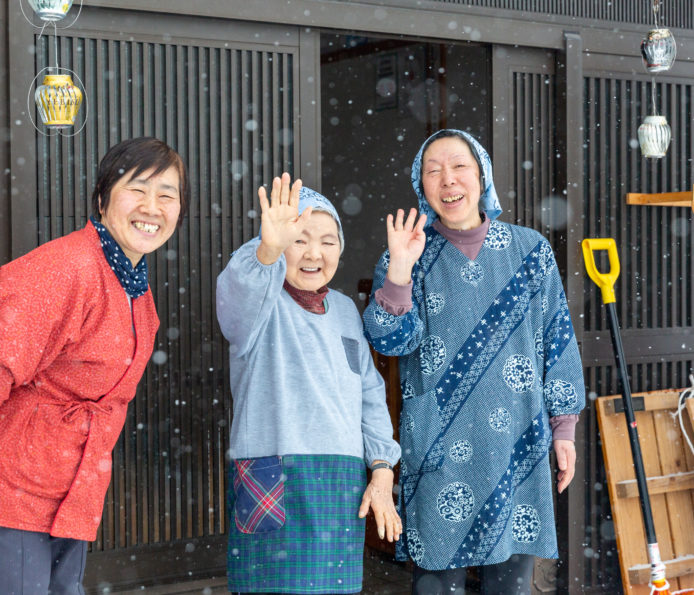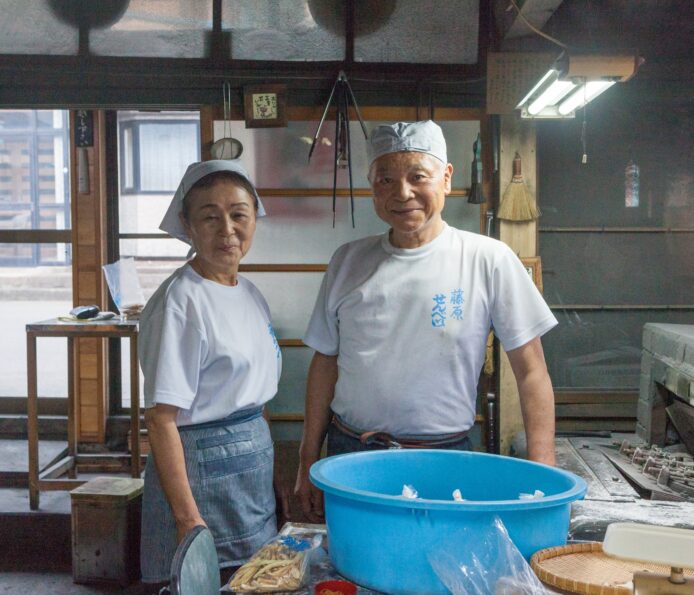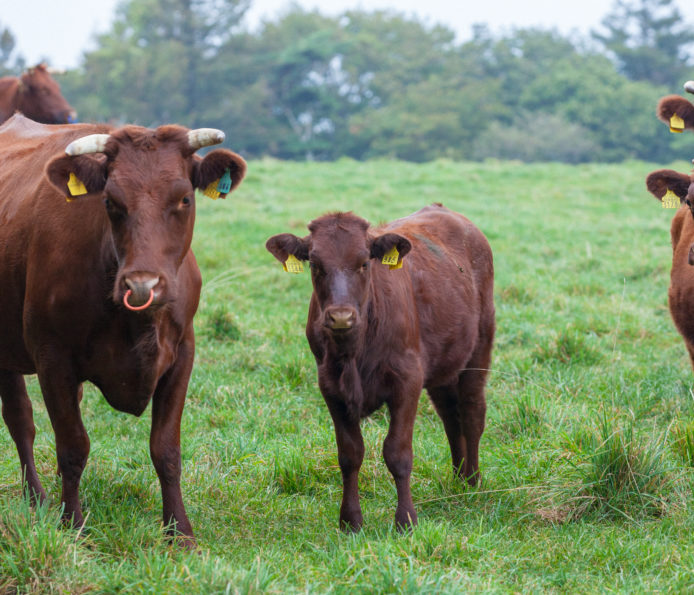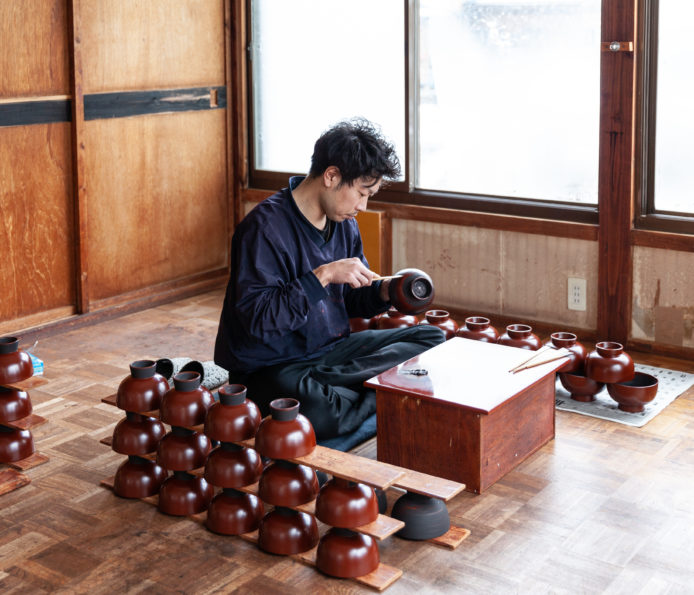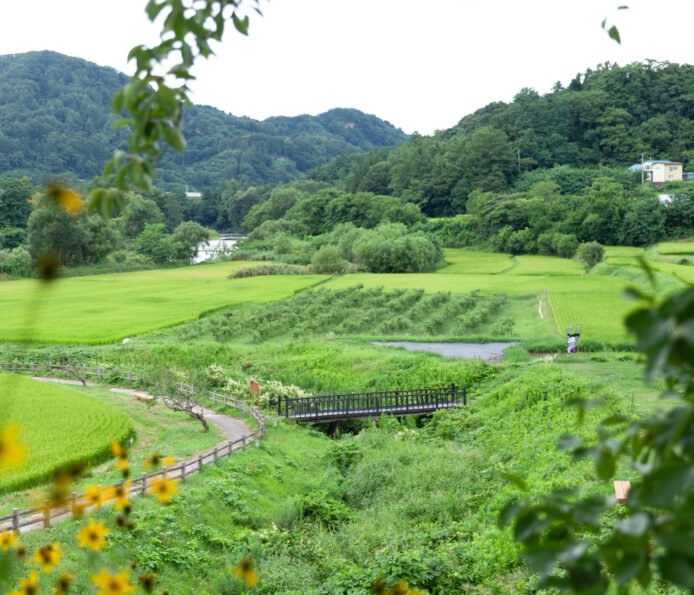A trip tracing back the ingredients
To advance oneself by learning from encounters in a journey. This entails deciding travel destinations focused on one’s self learning, finding experiences to enrich life and work, and the flexibility to change routes without being restricted to guidebooks. Ambitious people who can shape their own work seem to be good at “the editing style of traveling.”
Kae Terawaki, chef and CEO of Globe Caravan is one of such people. She caters dishes inspired by more than 50 countries to which she has traveled to, using the ingredients she encountered in each country.
The land that rears it all: cattle, pigs and poultry
Ninohe boasts “the three greatest meat brands,” which include each category of beef, pork and chicken. They grow in the spacious land of Ninohe with Mt. Oritsume in the east, and Mt. Inaniwa in the west.

The Iwate Shorthorn are released to the pasture from May to October where they graze freely and live in cowsheds in the summer mountain stocking and winter housing system.
You can closely observe the Iwate Shorthorn cattle living freely in the spacious Inaniwa Plateau where the gentle sun shines and the cool wind blows. The scenery is described in Nanbu Ushioi Uta, which are the songs sung when rounding up Nanbu cattle. During the times when Iwate used to be known as the Nanbu domain, the Nanbu cattle which played an important role for transporting goods were bred with the Shorthorn species. This species later developed into its current breed, with the special features of lean beef.
They are raised by natural grazing and natural breeding. Calves born in spring grow with their mother’s milk and the naturally grown pasture throughout summer, and then move to the cowshed to be carefully raised by stock farmers until shipment.
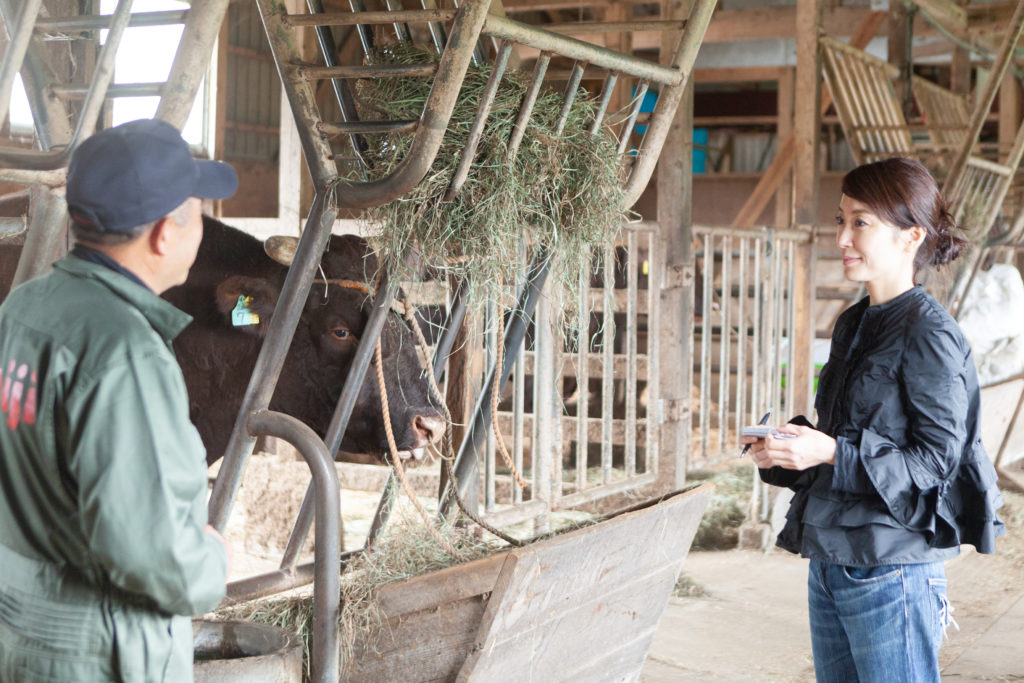
Visiting the cowshed for bulls guided by Mr. Yoshihiro Saito, chairman of the Bokuya Association in Joboji town.
Ms. Terawaki who has focused on production sites and consumer consciousness of different countries, explains to us:
“The food safety of livestock is determined by how it was raised and where the feed is from. Products without pesticide or with reduced pesticide is getting more common in Japan. I believe consumers in the future will pay more attention to what is fed to the livestock and how it is raised.”
Kuji farm, a place that serves precious livestock without any loss
The place we headed after the Inaniwa Plateau is Kuji farm which produces and sells Sasuke pork. It also sells Uredori (Mature Chicken). “Pork grown without stress tastes healthy and excellent,” says CEO Tsuyoshi Kuji. Sasuke pork, the signature brand pork, is raised in a pigpen located at the foot of Mt. Oritsume. The environment in which it grows has a perfectly controlled temperature, humidity, and cleanliness based on thorough research. In addition, they are raised healthily with a botanical feed mixed with biochar extracted from a stratum of 2 to 3 million years ago.
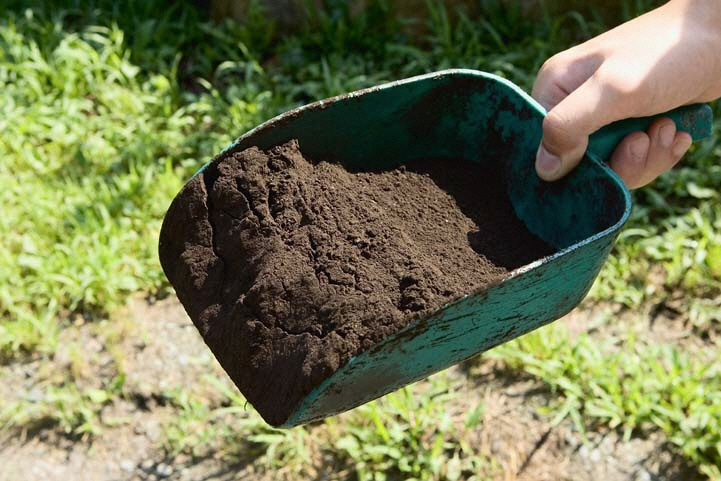
Carefully selected biochar is blended into the feed.
Focusing on the pigs to be healthy without any stress, vaccinations are limited to the least amount possible. The Sasuke pork with its silky balance of meat, a low-fat melting point, and a texture that melts in your mouth is the result of research and management. They also produce charcuterie to maximize the precious lives of their pigs.
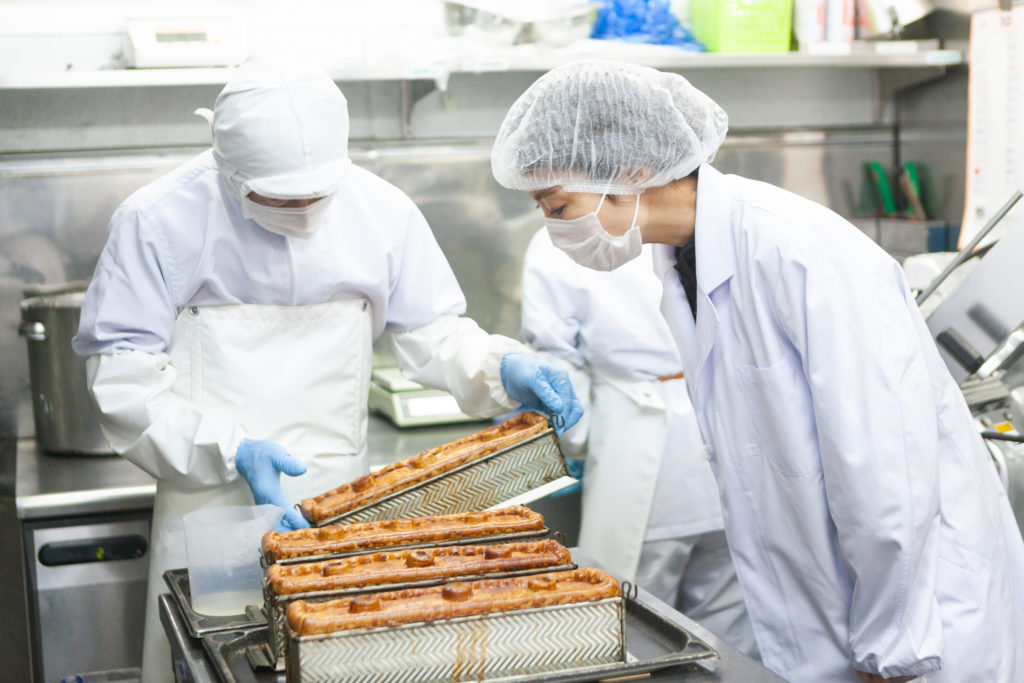
The factory tour guided by CEO Kuji.
Ninohe is one of the top production areas of young broilers in Japan. The parents of the young broilers are a brand chicken known as, “Uredori” They are raised freely without a cage for approximately 9 times longer than a young fowl. They grow up cage-free and their bodies are large and muscular. Compared with young chickens, its meat quality is so to say, “like an athlete.” Being fully matured and rich in flavor with increased umami, it has a special strong texture and makes a rich soup. “It’s no longer a fact that everyone prefers soft meat because of the diversity of food preferences.” The words of CEO Kuji get us excited to have a taste.

In the Okuyama area, we encountered the process of buckwheat threshing. Chef Terawaki takes a look at the work done with traditional tools.
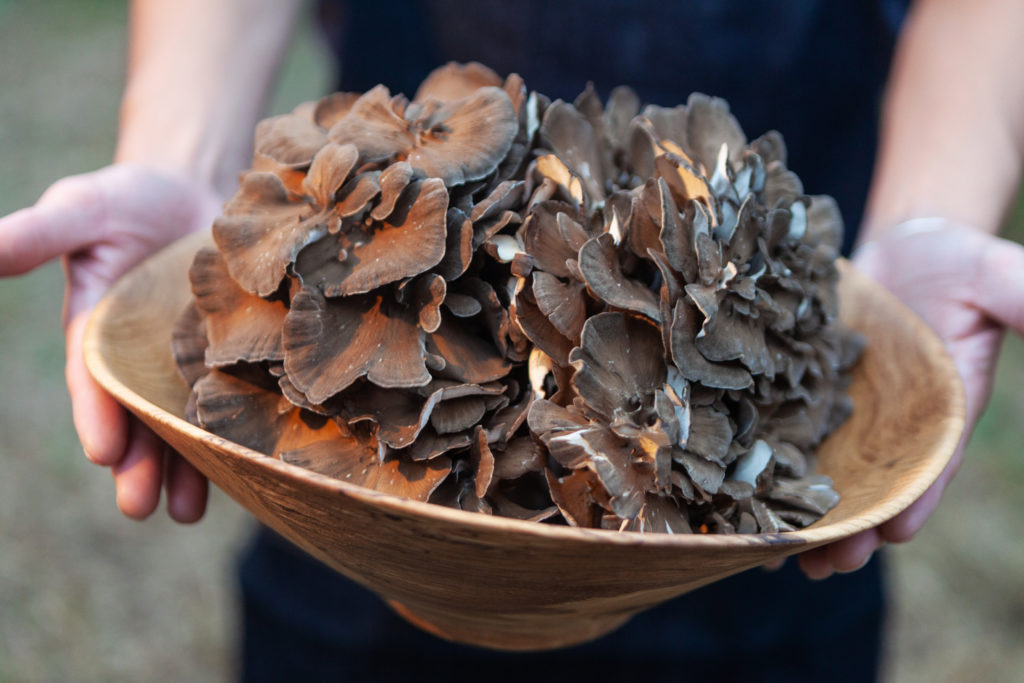
In autumn, enormous maitake mushrooms, even bigger than our hands, are sold at a local market in the Joboji area.
We also happened to find buckwheat threshing work at a field along a street. There are many impressive seasonal blessings from the land at the local market. All of the products at the market have the producer’s names on it, and we can also find special local snacks there too.
Dining out with the three greatest meat brands
encountered on the trip
We brought back the ingredients we encountered on the trip, and in the evening, held a dining experience with a special menu. The menu was crafted exclusively for this day and is based on Chef Terawaki’s original story.
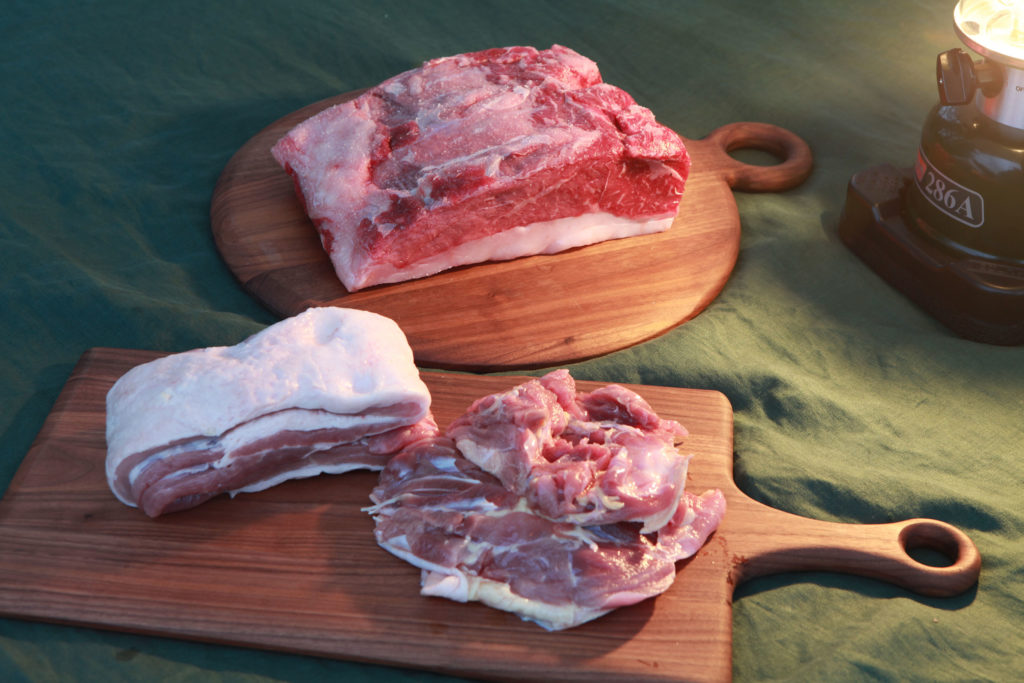
From above the Iwate Shorthorn beef, Sasuke pork, and Uredori.
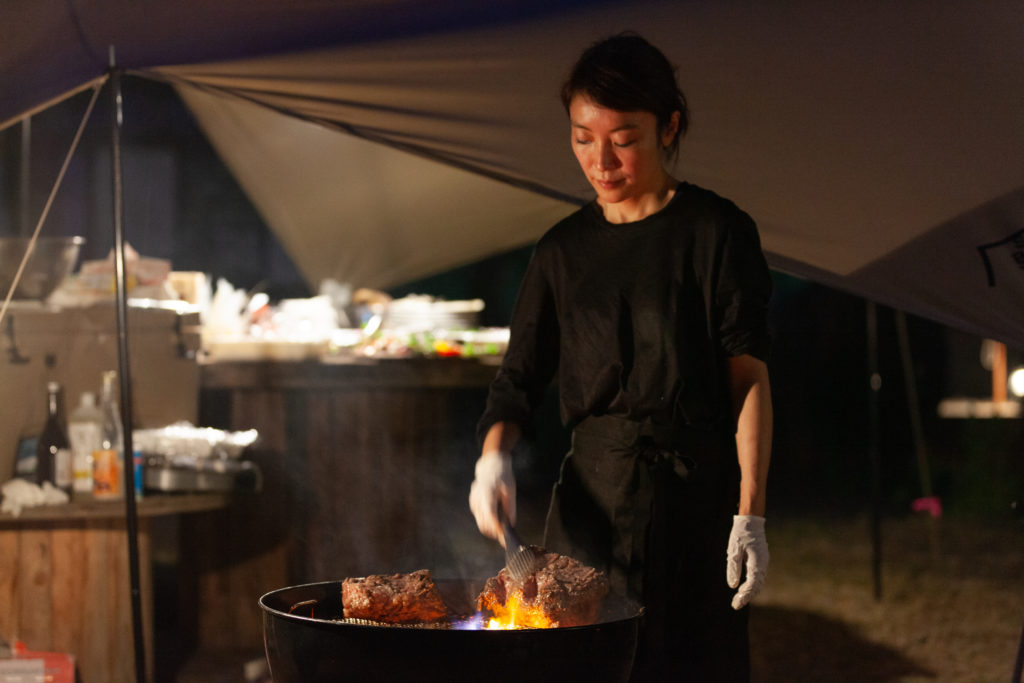
The Iwate Shorthorn beef is grilled with charcoal. The dishes are carefully cooked one by one, in order to bring out the best features of each meat.
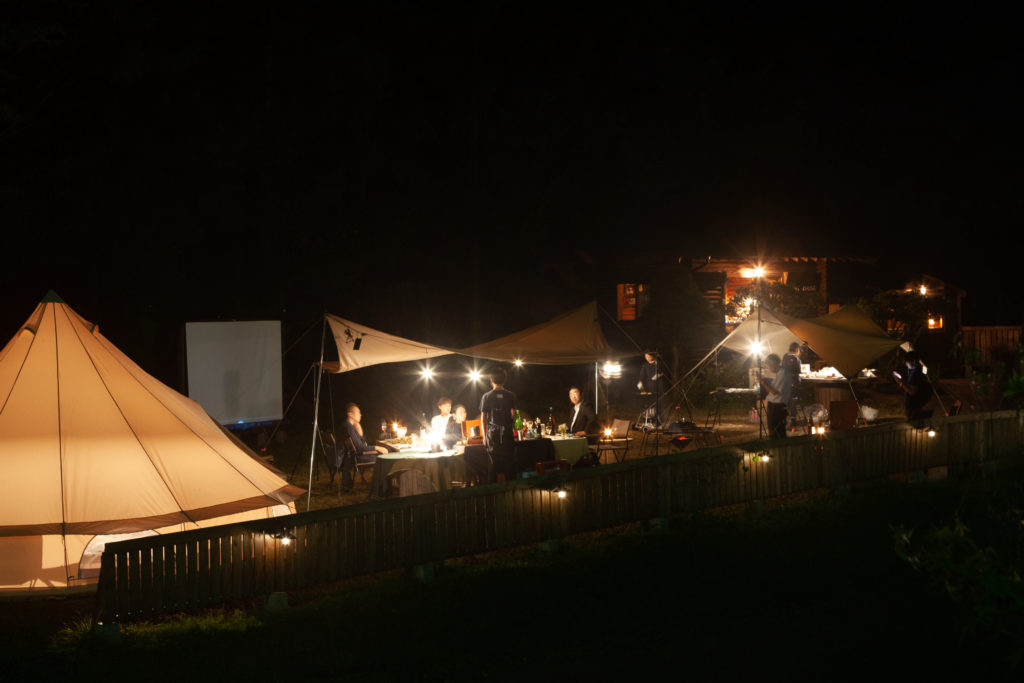
The dinner took place at YUDA BASE attached to Obonai Ryokan in Kindaichi Onsen.
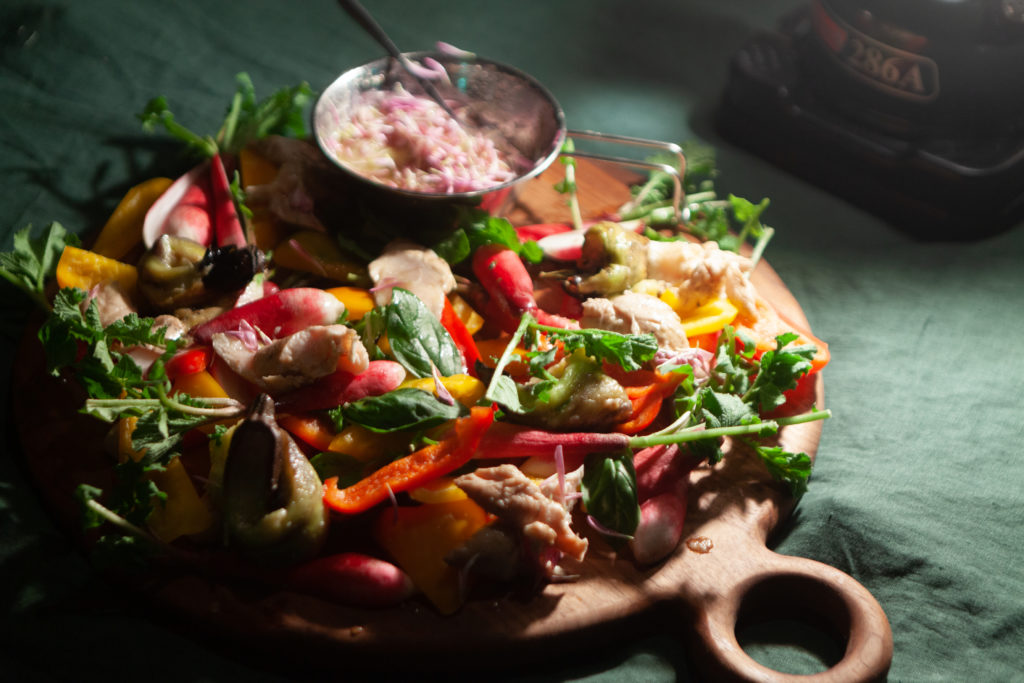
A salad of assorted vegetables gathered in Ninohe, topped with a chrysanthemum flower dressing.
A soup of Uredori broth. We were all surprised by the soup and the strong texture of the meat.

Maitake mushrooms are also cooked in the soup; the local people guarantee its delicious stock
Sasuke pork with an excellent texture that melts in the mouth was presented as a braised dish. It was stewed with doburoku sake from the Joboji area which is designated as “doburoku special zone.” The risotto was prepared using the stock from the braised pork and various cereal grains made in Ninohe.
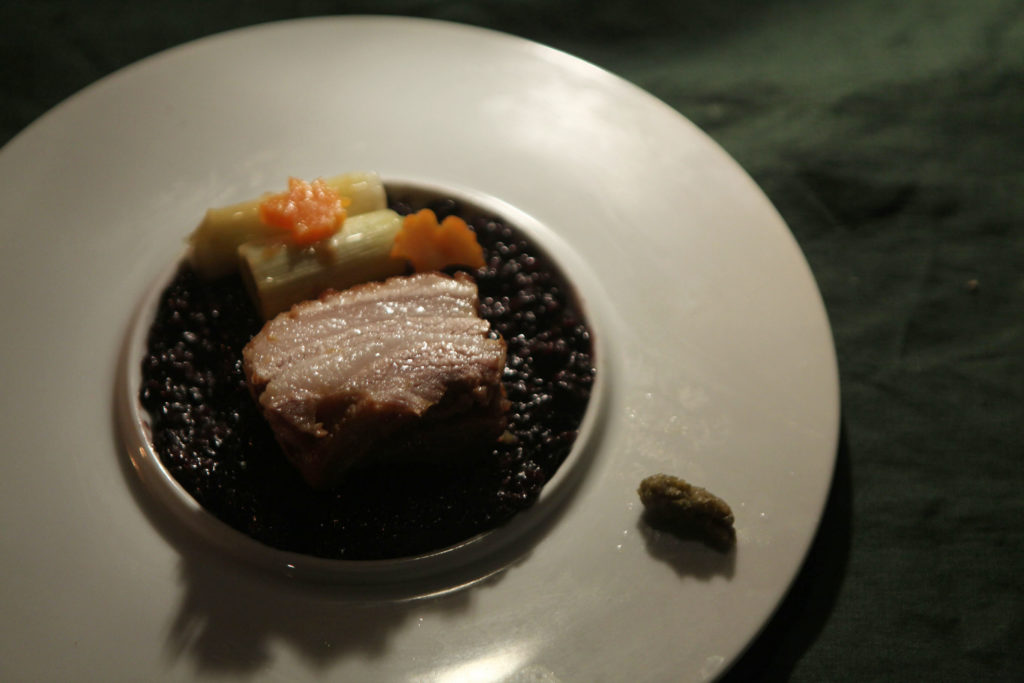
The umami melting from the Sasuke pork adds another layer to the texture of the cereal grains popping in your mouth.
At last, here comes the grilled Iwate Shorthorn beef. In addition to having the Nanbu cattle’s muscular DNA and a naturally fat covered body in order to retain heat in the cool climate, the Iwate Shorthorn cattle are grown into a healthy and firm body by being raised in a vast pasture. The more you chew, the more umami it gives. The taste of the region is connected as a story.

The Iwate Shorthorn beef boasts its deliciousness with a basis of being rich in umami flavor components such as glutamic acids.

Local sake rice, Gin Otome is used for Nanbu Bijin’s Tokubetsu Junmai (right).
In addition, Hirano, the sales manager at the local sake brewery Nanbu Bijin, directed various sake pairings for each dish on the day of the dining event. Dessert was a dish of prunes cooked with Nanbu Bijin sake.
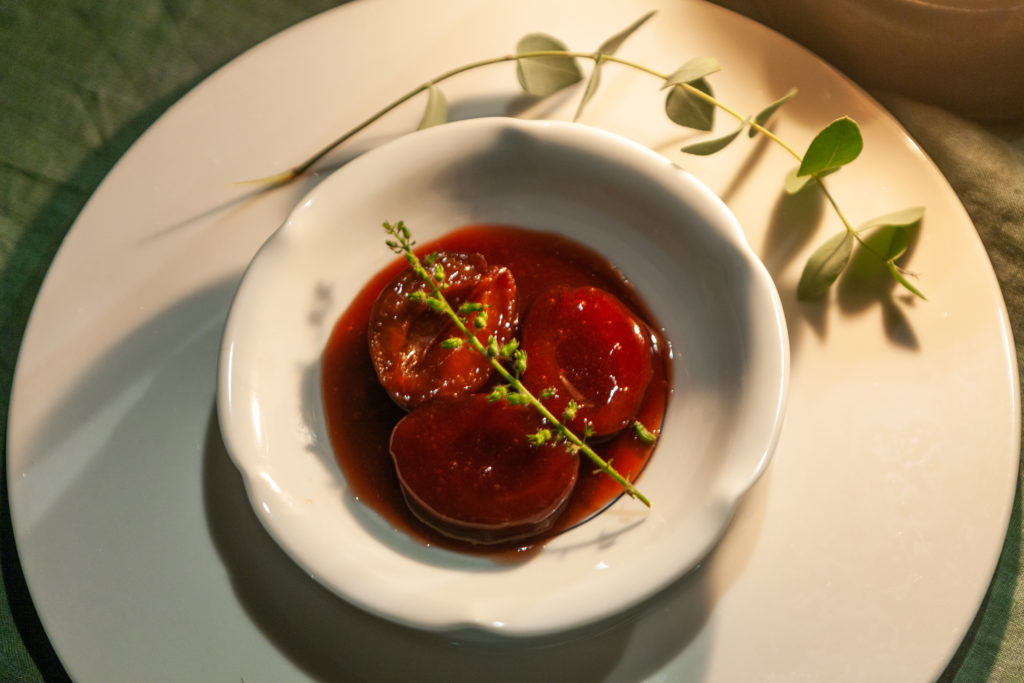
A desert of NInohe prunes cooked with Nanbu Bijin sake.
Ninohe’s unique ingredients were vividly arranged by Chef Terawaki. Her cooking is guided by her travel experience to the rich land and memories with the people of the site. The producers admired her creative ideas in order to bring out the best of the ingredients Ninohe has to offer.
To visit living things and learn that we are able to live
because of them
We asked Chef Terawaki the reason why she continues traveling inside and outside Japan while trying to find time within her busy schedule.
“The purpose of some trips are to learn the local food culture, while others are for seeking the discovery of kitchen tools or seasonings. I also cherish the trips to meet producers. It’s because I sometimes feel I might forget that the ingredients that support my work and the things I deliver to my guests are actual ‘living things.’ I travel because I can remember that ingredients are a living thing, how there are producers that grow them, and that I am also a part of the big ecosystem. I can also deepen my cooking philosophy through trips by seeing the production environment or a producer’s policy with my own eyes.”



